From Vision to Transformative Actions for the SDGs: co-creation of integrated actions in Manresa
Edited on
11 July 2022Around one hour and a half from Barcelona by train, in a hilly area of the Bages county, is Manresa - a small-sized city with around 78 000 inhabitants - one of several partners of similar size in the Global Goals for Cities network. On 21 April, I had the chance to stop by and attend one of Manresa’s URBACT Local Group (ULG) meetings organised by the local coordination team. Here, I share a few highlights of how the ULG and the participatory process is helping to shape the priorities of the Manresa 2030 Agenda and the integrated action plan that is currently in the making.
Text by Stina Heikkilä.

Localising the SDGs is not new in Manresa. Indeed, the local team has been working on the topic for over four years already, starting in 2018. Catch up on their story in this article written following our network’s fourth transnational meeting that Manresa co-hosted.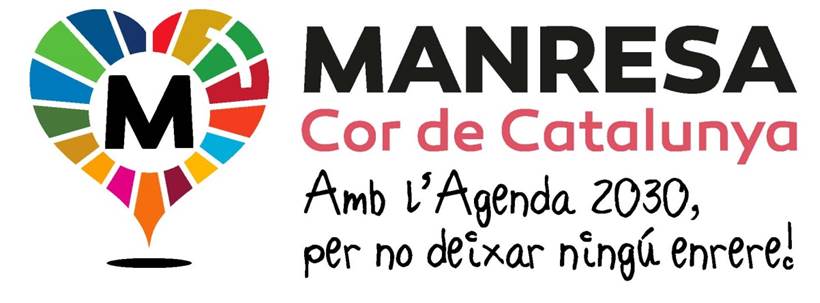
From city visions and missions to actions
In the current phase, the city staff and ULG members are busy trying to prioritise 30 actions that will deliver the vision for the city is within the set time frame of 2030. This is not an easy task, as action ideas have been collected through various meetings and consultations held since 2019. But this step is of course indispensable since the resources of the municipality – like everywhere – are limited.
“By looking at all the proposals, and combining those that are similar in scope, we have managed to come up with 30 transformative action proposals”, explains local coordinator Sonia Puyol, “these are further actions that can be adopted by the municipality, since we need to be leading by example and make sure that some resources are granted to start the work”.
The city of Manresa also used these 30 actions to derive its vision – or rather visions - for 2030. The four visions are explained in the SDG Story that was released in early 2022 and are the following:
- Nature preservation and proximity
- Social inclusion and equality
- Heritage and local identity
- Economic modernisation and real city perspective
Under the visions, the local team has identified eight missions that will help to get closer down to the action level. These are:
- By 2030, in Manresa we will have a more sustainable mobility, which will connect the city and its environment, prioritizing public transport, pedestrian areas and bike lanes.
- By 2030, in Manresa, the facilities and basic services will be within a maximum of 15 minutes on foot from all parts of the city.
- By 2030, Manresa will have accessible green areas in its neighbourhoods, key to improving health and social relations, and will invest in the conservation of its historical, cultural and architectural heritage.
- By 2030, we will enjoy a Green Ring of Manresa with a preserved environment, rich in healthy, sports, educational and tourist areas, where biodiversity will be protected and local agriculture and sustainable food will be promoted.
- By 2030, we will have succeeded in reducing inequalities and improving social inclusion, through more and better jobs, affordable housing, reducing the digital gap and combating all forms of discrimination.
- By 2030, we will have a competitive and sustainable local economy, thanks to technological innovation, the use of clean energy, circular production systems and a better articulation of the territory.
- By 2030, all municipal policies will incorporate citizen participation, a gender perspective and evaluation of results.
- By 2030, the City Council will have established solid multi-actor and multilevel alliances to achieve the Sustainable Development Goals, giving special support to citizen organizations and initiatives.
Keeping engagement among stakeholders
In the ULG meeting that I attended, the ULG coordinators Gisela Cebrian and Judith Saus started by giving a presentation recapping the previous activities done with the ULG. This helped to bring those who are new on board and those who may have missed a few meetings to catch up. 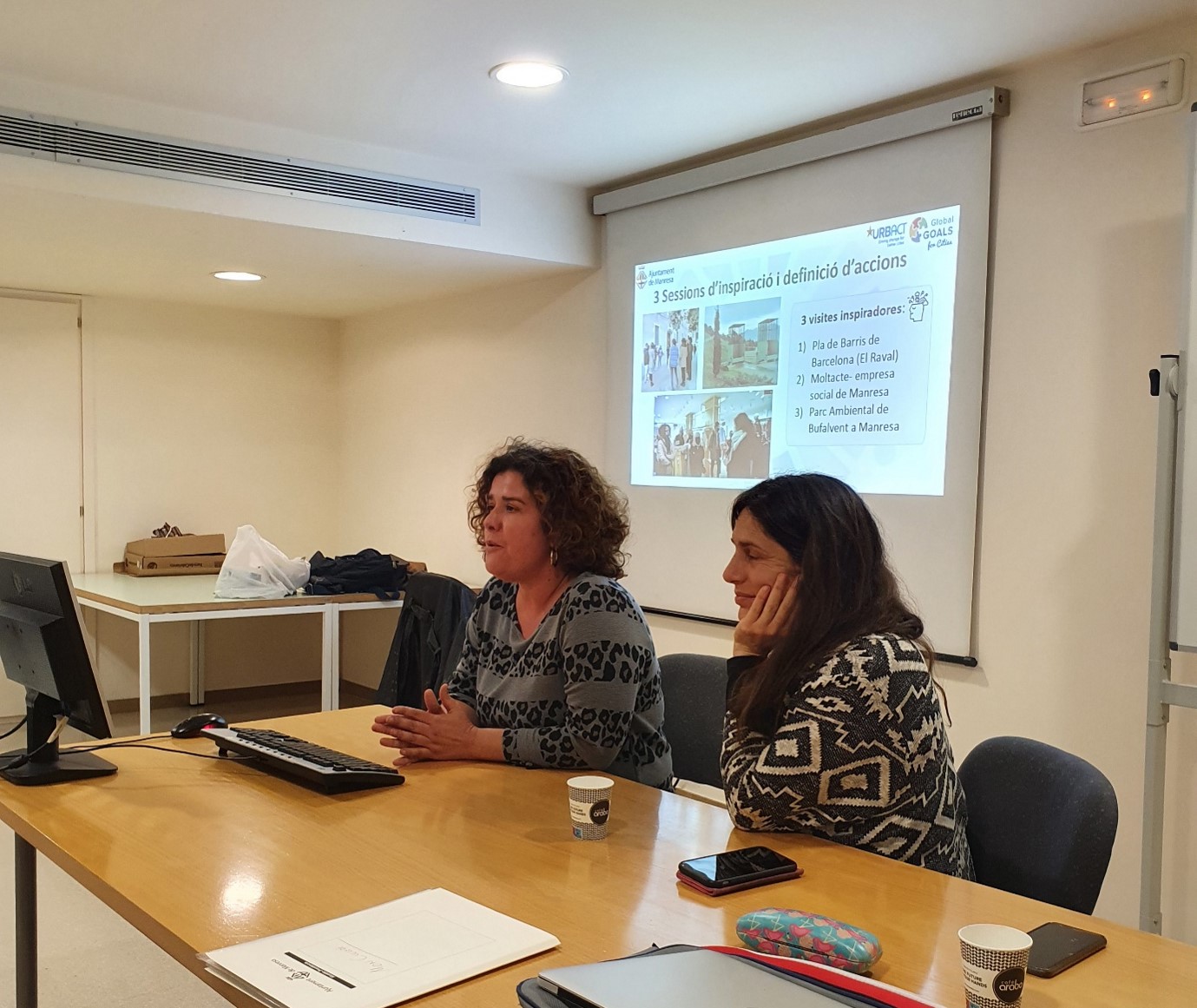
“A positive thing about showing what’s been done so far is to take a moment to acknowledge and celebrate people’s contributions” says Gisela, “I believe that this is one of the key reasons why people are still showing up: they can see that their contributions are taken on board”.
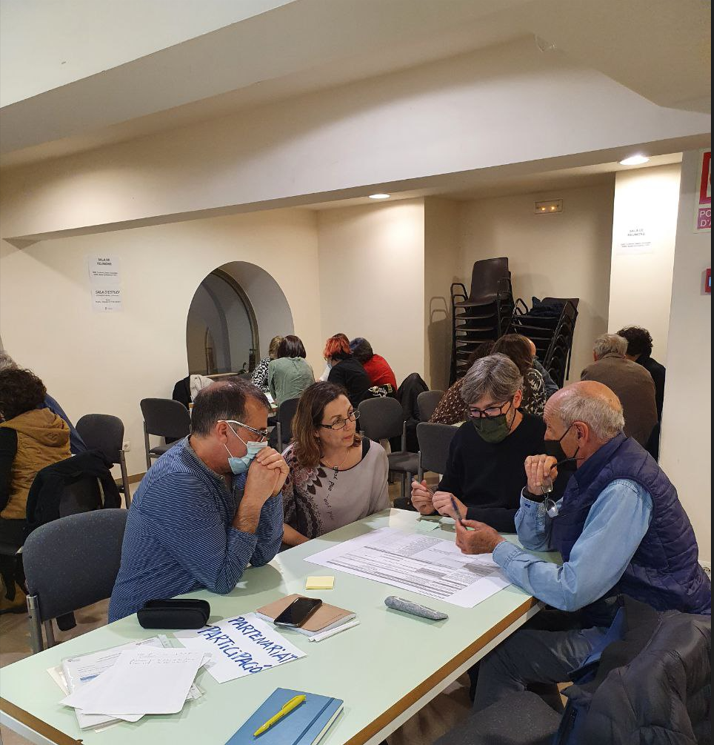
And you could really see that participants were deeply engaged. There was a sense of familiarity among them, and nobody seemed lost or wondering where to go or where to sit. On the other hand, they would like to know more about each other: one participant suggested that next time, they do a round of short presentations to be able to understand more profoundly who is in the room and what they are doing in their own organisations, especially related to SDGs.
Participants were divided on four different tables divided into themes - People, Planet, Prosperity, and Partnership & Participation. They joined the table whose theme most closely resonate with their own activities and potential contributions. For each table, the organisers had printed out pre-filled Action Tables in large format (A2), including the cross-cutting 30 actions that were formulated and prioritised in the previous steps, and planned activities by the municipality to fulfil those actions.
For example, one key project in the pipeline of the municipality is the sustainable rehabilitation of an ancient factory in the heart of the inner city, the so-called Fàbrica Nova, devoted to the university, research and entrepreneurship services (see pictures below). The factory has been bought by the municipality and fundraising activities are currently being carried out to make the project and its vision a reality.
The sustainable rehabilitation of the factory is expected to contribute to the vision and mission around local economy, particularly addressing SDGs 7, 8, 9, 11 and 12. The Fàbrica Nova is also expected to contribute to a wider territorial strategy for Manresa and its neighbouring municipalities.
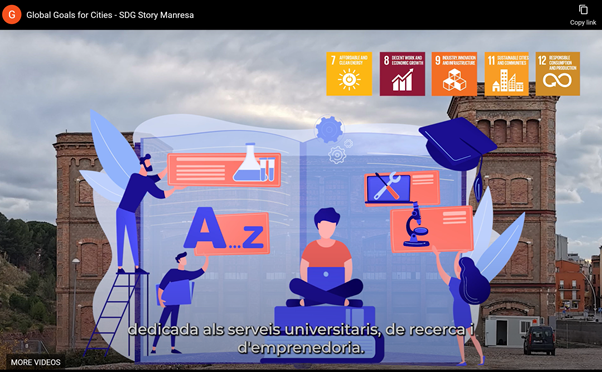
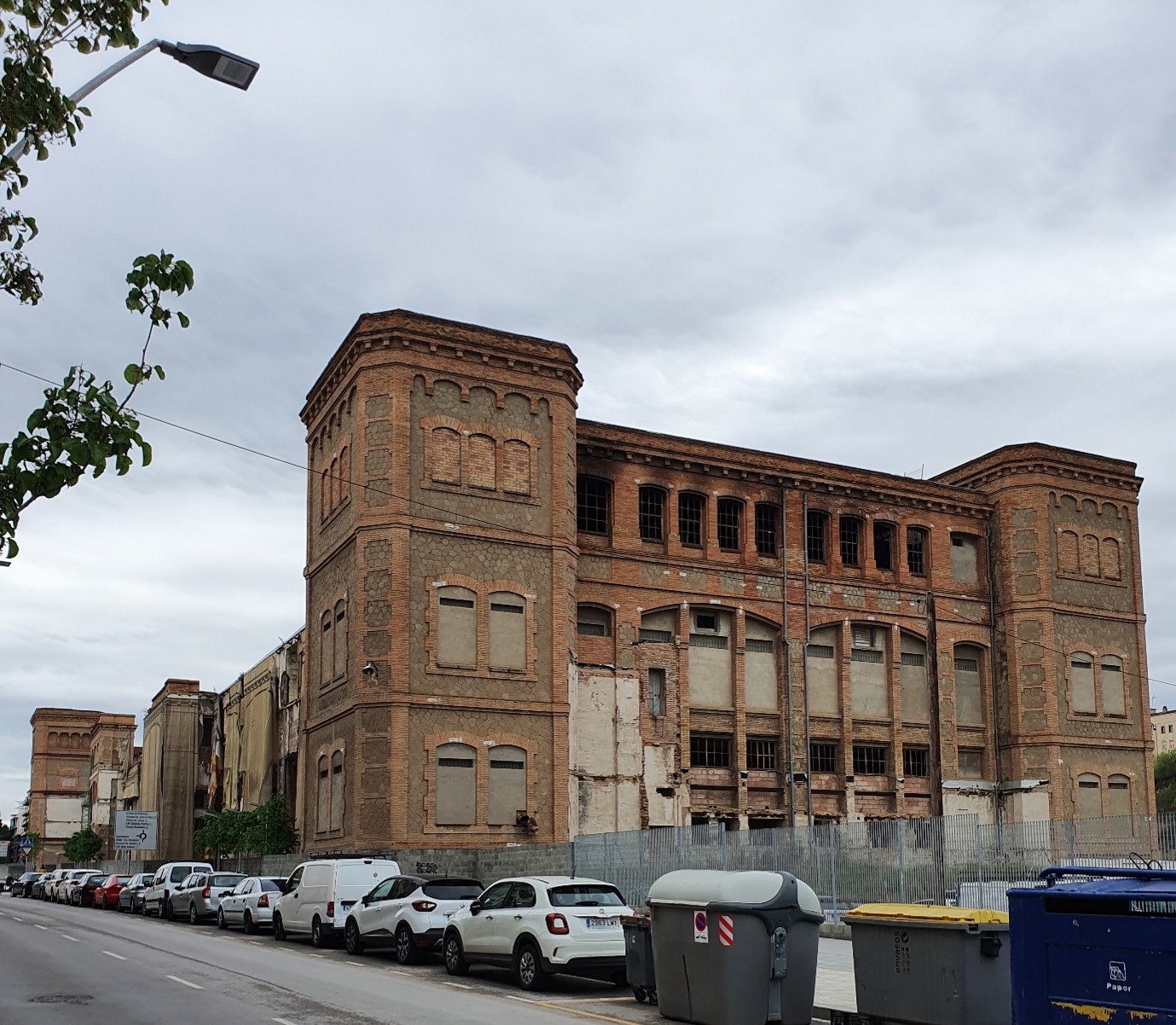
The task for the ULG during the meeting was to review and provide further ideas and inputs to the proposals, commenting on formulations and giving further ideas for additions and improvements. Indeed, many synergies between what local actors are doing and what the municipality could support were discussed, like installing electric vehicle recharge stations to enable car sharing schemes. The challenge now is to understand exactly how such opportunities may be exploited.
Results and next steps
The feedback collected by the participants helped the municipality to further refine and rethink some activities, plus considering additional opportunities to partner up with local actors such as:
- Developing a territorial network project for the rental of electric bikes with charging points;
- Enhancing the facilities and natural spaces of la Sequia Parc;
- Promoting the recovery, dissemination and cultivation of local varieties in collaboration local actors and social organisations;
- Adapting empty plots as landscaped areas, skate park, public toilets, sports court, intergenerational outdoor gymnastics;
- Actions of maintenance and impulse of a community workshop to elaborate products;
- Creating a municipal land bank; and
- Identifying, labeling and signaling and carrying out commercial promotion campaigns for local agricultural products.
After the ULG meeting, some participants expressed their wish to think further and work in the actions at home and with their colleagues so as to make more contributions to the proposal. Several contributions were done by ULG members in the following days.
Additionally, a survey about the participatory process and next steps was made after the activity. The answers received were very positive about the process itself and the willingness to collaborate in the future. Half of the respondents awarded the process where they are being involved with 9- 10 points (out of 10). They value most the possibility to get information of future projects and activities, to interact with other local stakeholders, to share and integrate different visions, and to have a voice in the planning of the future of Manresa.
Some of the ULG members fear that the results could not match with the expectations and priorities of the group, and many of them regret their lack of time to be more active. But 90% assure that they want to be involved in a future governance body (most of them would prefer meeting once per trimester), as well as implementing actions together, knowing better the rest of participants and what they are doing, and following the progress made in the Agenda Manresa 2030.
Other challenges that remain are for the participants to feel a sense of ownership and ability to fully contribute. Some ULG members expressed that they lack technical knowledge to be able to provide feedback on activities that involves for instance architectural or urban planning matters. In response, the local team plans to organise a future meeting with technical staff from the municipality to better explain the implications of different choices.
Keeping local stakeholders engaged is certainly not a walk in the park, especially when it comes to complex issues that feel far from their everyday lives. By applying a participatory approach persistently and being open to new ideas, the municipality can change its way of working gradually.
And that is what Manresa is doing. The advantage of being a small city is that trust can be built between active participants who get to know each other. And there is no doubt that the challenges we face in the 21st century can not be solved by anybody acting in isolation!
Text by Stina Heikkilä.
Submitted by Karin Luhaäär on
